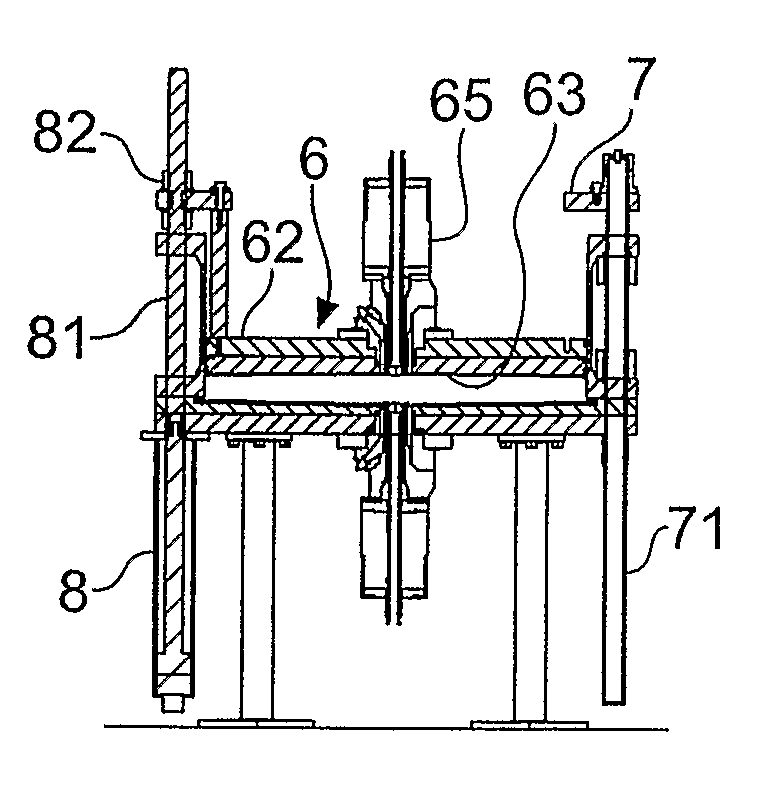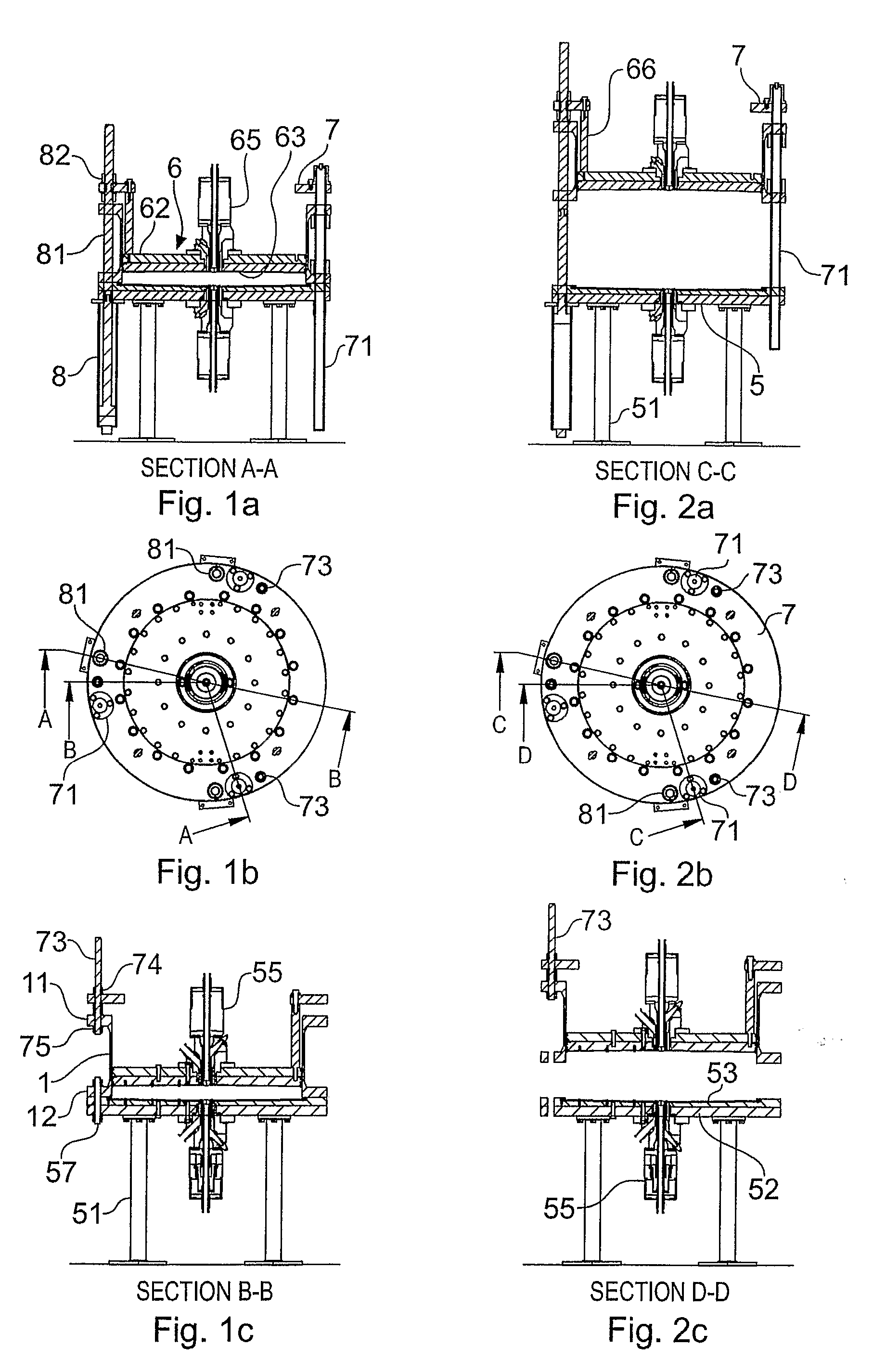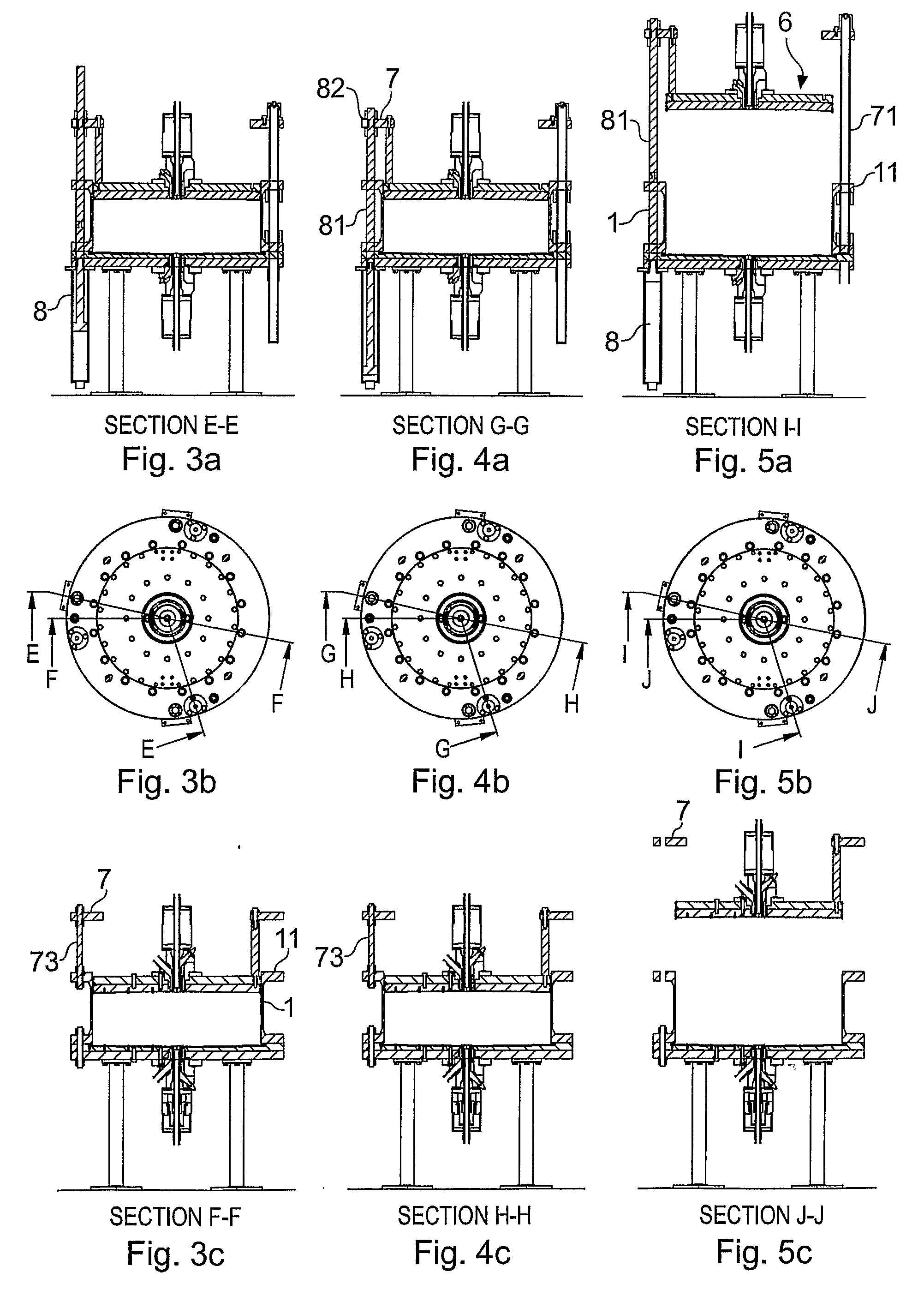Chromatography columns and their operation
- Summary
- Abstract
- Description
- Claims
- Application Information
AI Technical Summary
Benefits of technology
Problems solved by technology
Method used
Image
Examples
Embodiment Construction
[0055] The column components are broadly similar to those in FIGS. 1 to 5 discussed previously. Thus, the cylindrical stainless steel column tube 101 has upper and lower integral flanges 111, 112, and the base 105 consists of a steel backing plate 152 and a contoured cell plate 153 which carries the bed support mesh. Releasable threaded studs 157 hold the bottom column flange 112 down onto the base, clamping a fixed seal 159 described later. The column base 105 stands on support legs 151, here a wheeled mobile support, providing a component space beneath the base.
[0056] Continuing with reference to FIGS. 6 to 9, three hydraulic drive cylinders 108 are mounted to the underside of the base plate 152, and each operates a drive rod 181 extending up slidably through an opening in the base 105, a corresponding opening in the lower tube flange 112 and up to the upper flange 111. The upper flange 111 has corresponding holes, and a drive extension rod 183 has its bottom end passing through ...
PUM
 Login to View More
Login to View More Abstract
Description
Claims
Application Information
 Login to View More
Login to View More - R&D
- Intellectual Property
- Life Sciences
- Materials
- Tech Scout
- Unparalleled Data Quality
- Higher Quality Content
- 60% Fewer Hallucinations
Browse by: Latest US Patents, China's latest patents, Technical Efficacy Thesaurus, Application Domain, Technology Topic, Popular Technical Reports.
© 2025 PatSnap. All rights reserved.Legal|Privacy policy|Modern Slavery Act Transparency Statement|Sitemap|About US| Contact US: help@patsnap.com



